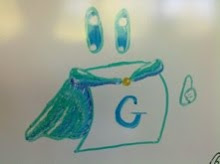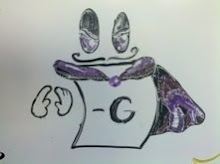I replaced getting a post ready for Tuesday with preparing a talk for this past Monday. I spoke at our
department colloquium about
Neighboring Nim, describing the reduction from (Vertex) Geography. Two excellent things happened.
First, I had a great audience. While playing Neighboring Nim against them, they were very energetic to make good plays against me. Will, a senior student of mine, immediately took on the role of surveyor, collecting move nominations from the crowd, then calling for a vote. The discussions were loud and boisterous. At one point, I made a very fast response to one of the audience's moves, using the Quick and Confident method. Unfortunately, I moved to an N position, with two P options. The audience quickly picked the board apart (it was by no means trivial) and found the two winning moves. The problem was that, individually, they didn't see the viability of the other move. So there were two groups arguing vehemently for two separate perfect moves. The attitude nearly boiled over. Luckily, the audience finally agreed and they made one of the moves. It was very exciting to speak to such a charged group!
Second, I changed the order of my talk around regarding the proof of computational complexity. Usually I claim that a game is hard for some complexity class, explain what that means, then show the reduction. Talking about complexity classes to a general undergraduate audience is a bit of a speed bump, and often shakes people out of the rest of the talk, meaning they don't follow the steps of the reduction. This time, I just said that the two games were related, then explained the reduction. This kept the crowd interested, because it's a description of positions in a game they just learned how to play. At the end of the talk, I spoke briefly about the implications of the transformation: the PSPACE-hardness of Geography implies the PSPACE-hardness of Neighboring Nim. At that point, having seen the reduction in full, I hope it sank in. Although I wouldn't do this in the future when presenting to a primarily graduate-student/professor group, it seemed to work really well for people who hadn't seen computational complexity before.
The slides for the talk are
here.
Next week is Fall Break at Wittenberg, so there will probably not be a post on Tuesday as I spend the time off preparing for Integers 2011 the week after. With any luck, once I'm there I'll get to post some notes each day.




